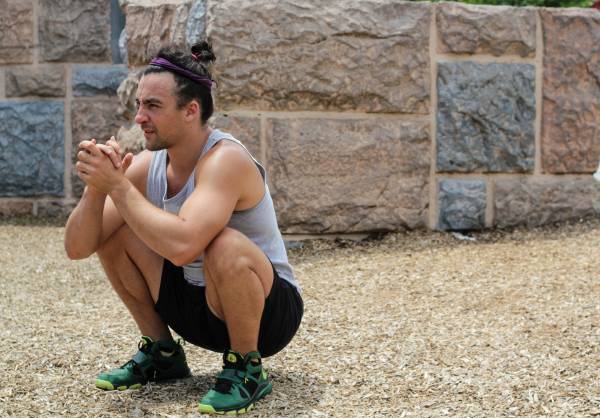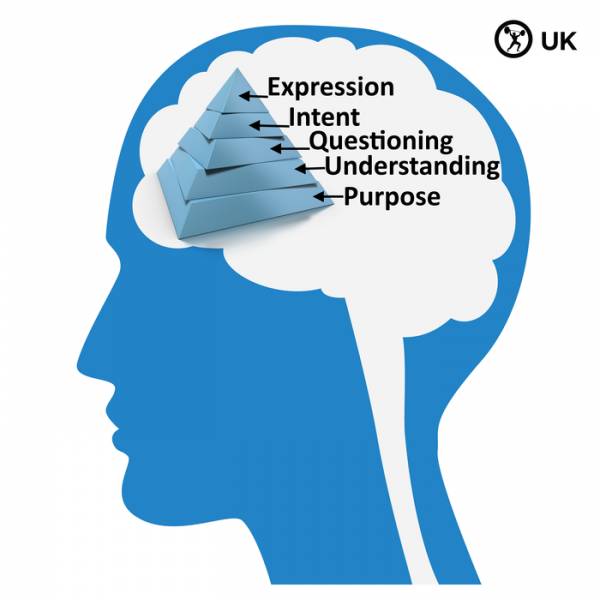Today, we have access to more training options than ever before. Within the click of a few buttons, we can engage with world-class coaches and pre-made programs for any performance area we choose.
If you’re anything like me, all this choice is overwhelming. I’m a simple man. But I know I can’t be the only one who gets overwhelmed when I step into a car and there’s seven different ways to adjust the driver’s seat. I mean, all I want is to move it back and forth and maybe adjust the backrest angle, right?
Choice is liberating, sure, but it can also be overwhelming.
But I digress. Let’s go back to training choices. What if we all had free and unlimited access to a machine that could take all these choices – programs, coaches, exercises, warm-up drills, and whatever else – and compute what is best for us as individuals? A machine that could help us make real-time information into good decisions as we continue through our training plan. A machine that could handle the most complex of situations and give us meaningful outputs.
We do have this machine. It’s called our brain. And we can get it to do all of these things. The problem is, there’s no operating system, program, or user manual. So here’s a system on how you can use this wonderful machine we call our brain to become a thinking athlete, and be able to take advantage of its immense power.
Purpose
Purpose is fundamental to everything we do. Our brains are wired for survival – the primary, and most primitive purpose of our existence. We can take advantage of this in our training. The more we can align any program or task we do with a deeper purpose, the more our bodies will comply – as the brain is telling our body this is a wise thing to do.

Having a purpose for each training session keeps you in tune with your body.
This means if we are trying to get stronger, we need to explain to the brain that the methods (programs, exercises) we are using are good and this goal is important to our survival. Training through pain or forcing your body to push beyond limits every single session when our brain is telling us otherwise will send signals back to the brain to tell your body to back off. This isn’t particularly helpful when you are trying to get stronger or fitter. We need our brain to allow us access to the strength our body is trying to develop.
What you can do: Know your brain and body are inseparable. Examine the purpose of the program, drills, or task at hand. If your brain is constantly being given signals to stop you, it probably will. Train in a way that gives your brain a reason to allow you to continue to do so.
Understanding
I believe that an athlete increasing his or her understanding of all aspects of training can only be a good thing – with one exception: the high-level athlete who is following a set program with a full-time coach. At that level, I can understand how a regimented focus simply on the task at hand can focus the brain.
A greater understanding of what we are getting ourselves into helps us to choose programs that can help us the most. Most of us don’t have the luxury of full-time training with a dedicated coach, or even a tailor-made program. So a greater understanding of what we are getting ourselves into helps us to choose programs that can help us the most and choose coaches who are most suited to us.
What you can do: Seek to understand the workings of what you do at more than surface level. You don’t need to understand how everything works. But don’t take all that a program or coach promises as a given, either. We have a multitude of choices. Deepening our understanding is the only real way of choosing between them.
Questioning
Once we have selected a coach or program, our mission to attain a better understanding of our training is far from over. Training is a dynamic process, and we must retain a fluid process of obtaining a deeper understanding of it. That process is the questioning of everything we do.

Don’t be afraid to have questions in your head – training should be a cerebral and dynamic process.
I don’t mean being obtuse toward your coach. Questioning doesn’t have to be verbal. You can ask questions through trial and error, too. “That exercise looks good. It fits with my purpose and understanding. But will it work for me?” You can only tell by trying. Our only way of making sense of the world is, well, through our senses. But what you see is not always what you get. So we cannot trust everything we see and hear. (One hour spent on the Internet will affirm that.)
What you can do: Question everything. This is as opposed to taking everything you see at face value. Questioning regulates the knowledge derived from observation through our senses.
Intent
That trial-and-error process we discussed in the last section means nothing unless it is performed with intent. Performing any program, exercise, or drill (or any set of instructions for that matter) without proper intent will draw little in the way of accurate conclusions.
The complex part is working out which elements of our training are universal, and which are individual. Intent flows right down to movement and muscular level. Bodybuilders have what they call “muscle intention” – an isolated focus on a particular muscle in order to help it grow. In lifting, an intent to lift the bar as fast as possible is almost as important as if you are actually moving the bar faster. Both modes of intent have real effects on your development as an athlete.
What you can do: Lift with intent, from how you perform each movement all the way through to how you execute your program.
Expression
As athletes, we create individual expressions of universal principles. The complex part is working out which elements of our training are universal, and which are individual. And this is the crux of why programs fail and why people get injured. Let me give you an example.
You observe your friend have success on a particular training program. So you try to perform it in exactly the same manner as he or she did – the same five days on, two days off weekly training schedule. And your friend did low-bar squats so you’d better do them too instead of your usual high-bar variation.

Programs are a great place to start, but no aspect of training is always going to work for everybody.
But your friend is a powerlifter with years of training experience. And you are a relatively newbie, an Olympic weightlifter with less than a year lifting experience.
The problem is, you are focusing on all the individual elements of the program and making them universal. The schedule and squat type are not imitable factors – they are individual expressions. As a result of these factors not being suitable for you, you get injured.
What you can do: Determine the universal aspects of the task at hand. In this case, knowing carryover of movement pattern into your sport, and consistency of training are the universal principles would lead to selecting an individual schedule that suits you and a squat expression that suits your sport.
Summary
How do you determine which aspects of training are universal and which are individual? It’s simple – create a system for your brain to follow. Just follow this user’s guide in the order you have read. As you will see, each element of the system builds on the last.
- Purpose – Define your deeper purpose
- Understanding – Always seek to understand more, in order to fulfill your purpose
- Questioning – Continue to question, to constantly improve your understanding.
- Intent – Question your understanding with conviction
- Expression – Express universal factors with individual intent

Following this approach with every aspect of your training will make that complex decision-making machine we spoke about at the beginning more and more efficient. Which means better training decisions, more commitment to them, and better results.
Feed the machine.
Check out these related articles:
- How to Be an Expert – Knowing You Know Nothing is Everything
- 6 Steps to Becoming a Better Athlete (and Person)
- Free Will and Gains – 5 Things for Lifters to Stop Worrying About
- What’s New On Pulse Beat Fit Today
?Photos 1, 2, and 3 courtesy of Pulse Beat Fit.
Photo 4 courtest of Pulse Beat Fit UK






